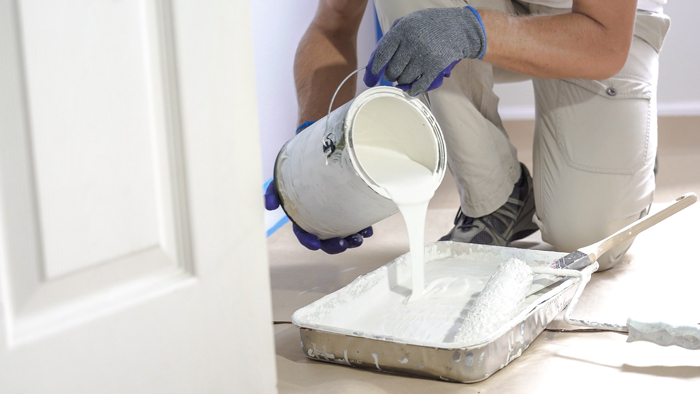Get our independent lab tests, expert reviews and honest advice.
The secret house paint tax you’re paying for

Need to know
- The Paintback scheme takes in millions of dollars a year through a levy on every litre of paint sold in Australia
- Paintback has been granted exemptions to laws requiring the public reporting of finances
- The organisation says the money raised goes to keeping paint out of landfill and research into the "circular economy"
A little-known paint industry scheme is taking millions of dollars a year out of the pockets of Australian consumers and sending it to a secretive organisation with no public accountability.
Every litre of architectural and decorative paint sold in Australia has a levy of 15 cents plus GST attached to it for sales between one and 20 litres. There are over 100 million litres of paint sold in Australia every year, meaning the levy may be raking in millions.
Paintback Ltd … has been granted secrecy exemptions to laws requiring the public disclosure of revenue, operations and spending
The money goes to a not-for-profit charity organisation called Paintback Ltd, which has been granted secrecy exemptions to laws requiring the public disclosure of revenue, operations and spending. The exemption was granted to protect “commercially sensitive” information.
The scheme’s members include major paint brands such as Dulux, Bristol and Wattyl, and the majority of the members of Paintback’s board are representatives of paint companies.
Paintback operates paint recycling collection points around the country, and says its aim is to keep paint out of landfill and from being illegally dumped. The organisation also conducts research into the “circular economy”, but declined to reveal how much money it spends on each of these areas of operations.
No transparency
The Australian Charities and Not-for-profit Commission (ACNC) classifies Paintback as a “large” organisation, meaning its revenue is over $3 million a year.
However, exactly how much the scheme brings in or where the money goes is a mystery to the public. The Australian Competition and Consumer Commission (ACCC), which approved the scheme in 2016 and renewed it for ten years in 2021, granted Paintback broad secrecy provisions.
Exactly how much the scheme brings in or where the money goes is a mystery to the public
The ACCC says it maintains no role in monitoring the effectiveness of the scheme and will only consider the experience of the scheme again if an application for an extension of the levy is lodged when the current one expires in 2031. The Commission says an “additional level of detail in financial reporting is not necessary for the realisation of the public benefits of the Scheme”.
At the time of Paintback’s 2021 application for the renewal of the levy, the New South Wales Environmental Protection Agency (EPA) supported the proposal overall, but called for more financial transparency and reporting of key information, such as the disposal outcomes and where used paint ended up. The ACCC dismissed the EPA’s concerns.
Paintback argued that greater financial transparency would threaten the viability of the scheme, as paint companies involved may pull out due to “commercially sensitive” information being published.
Paintback argued that greater financial transparency would threaten the viability of the scheme
“Greater transparency in respect of Paintback’s financial information is unnecessary to safeguard the recognised environmental public benefits accruing from the Scheme and indeed would involve significant public detriments that would compromise the effectiveness (and potentially the existence) of the Scheme,” Paintback’s lawyers said at the time.
Paintback told us overhead expenditure is 8% of spending and all remaining expenditure is spent on “collections, recycling and reuse processes, disposals, research and development, safety auditing and market education and training”.
‘Unusual arrangement’
Sandra van der Laan is a professor of accounting from the University of Sydney who focuses on financial reporting, accountability and regulation.
She says the secrecy arrangements granted to Paintback are “unusual” and rarely seen in charities or nonprofits outside of religious organisations.
“I don’t know how they got permission not to have that stuff made public … The public has a right to know what they are doing with the benefits of that charitable status,” Laan says.
She adds that, in her opinion, the argument of “commercial sensitivity” is questionable and that secrecy risks undermining public trust in the scheme.

Paint sellers and buyers confused
Tom, not his real name, runs a paint shop in New South Wales; a subsidiary of Dulux. He asked for anonymity over fears the company could retaliate against him for speaking out.
He says tradies and regular paint buyers have asked him about the 15 cent levy and what the money goes towards and he has to tell them that he doesn’t know.
“What are they doing? I don’t understand, and there is no clear communication with us as paint sellers,” he says.
I don’t understand, and there is no clear communication with us as paint sellers
Tom, who runs a paint shop in NSW
He says another gripe is the 100 litre limit on how much paint can be dropped off at collection points each day, with painters having to hoard hundreds of litres of paint that they can’t dispose of.
“The painters feel like they have already paid for this scheme through the levy; why can’t they dispose of their paint?” says Tom.
The NSW EPA also raised concerns that the levy didn’t cover the full cost of paint disposal in the state.
Paintback responds
Paintback interim chief executive John Ferraro says since beginning in 2016 the scheme has collected and treated over 51 million kilograms of unwanted paint and packaging. CHOICE asked how much of that collected paint ended up in landfill; Paintback replied that its annual rate of “diversion from landfill” ranged between 54% to 79%.
“Paintback now provides an extensive network of cost-free collection points which span over 165 locations across Australia, collaborating with local councils and drop-off sites to cater to over 85% of the general population,” he says.
Ferraro says the organisation is “proud of the unique structure of the scheme”, whose aim is to “protect the environment”.





